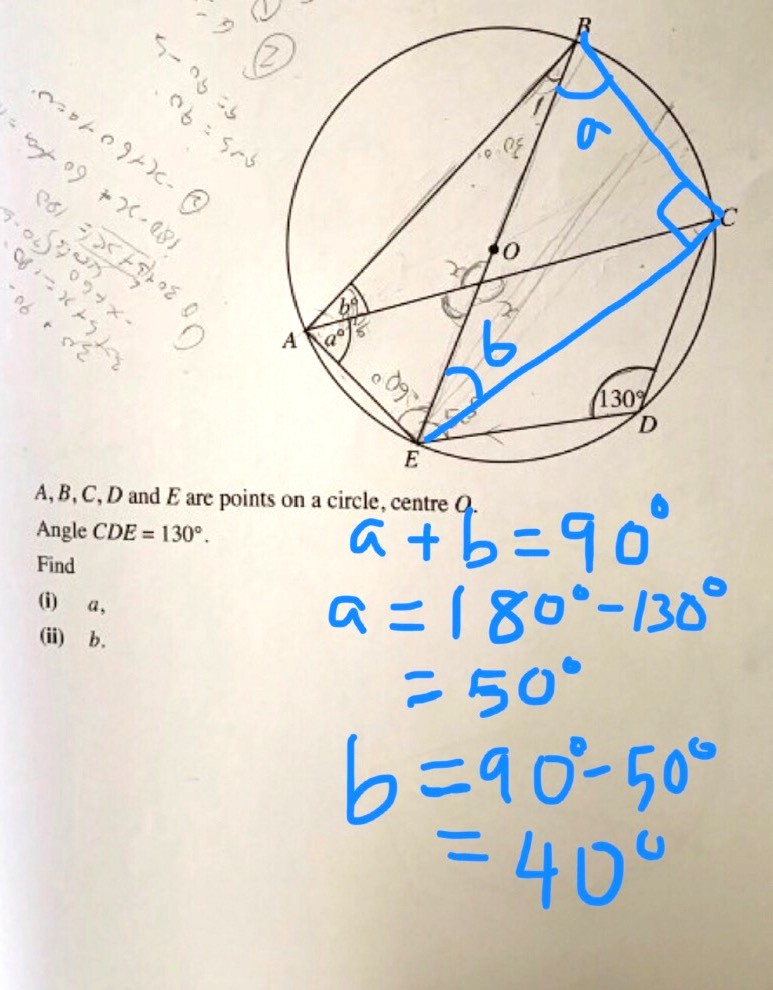Pancakes's answer to Your Mum's Secondary 4 E Maths Singapore question.
done
1 Upvotes
clear 0 Downvotes

Notice that EB is the diameter of the circle since it passes through O, the centre of the circle. Draw in the blue lines as shown. Angle BEC = angle BAC = b (angles in the same segment). Angle EBC = angle EAC = a (angles in the same segment). Triangle EBC is a right angled triangle since EB is the diameter. Therefore, angle BCE = 90 degrees. Using angle sum of triangle, it follows that a + b = 90 degrees. EBCD is a cyclic quadrilateral whose vertices lie on the circumference of the circle. In a cyclic quadrilateral, opposite angles add up to 180 degrees. Therefore, a = 180 - 130 = 50 degrees and b = 90 - 50 = 40 degrees.
Date Posted:
5 years ago

